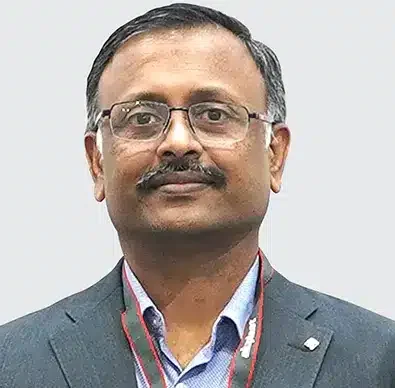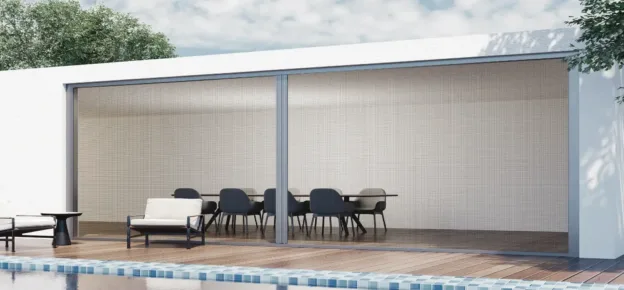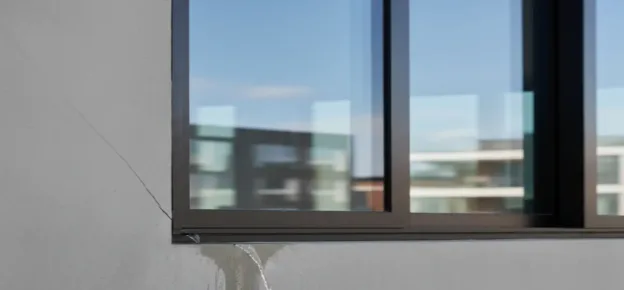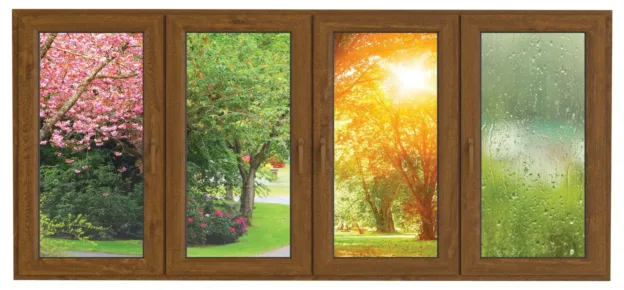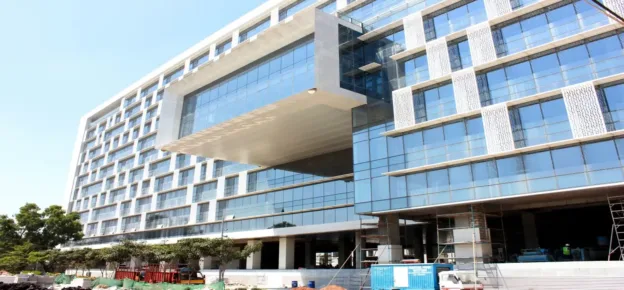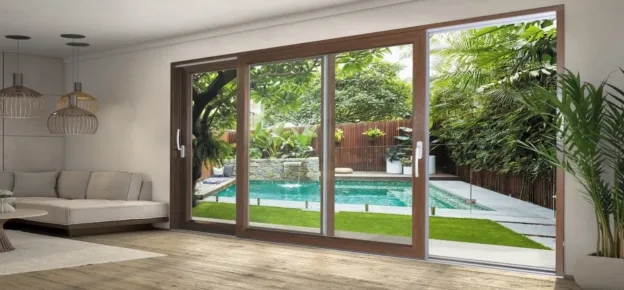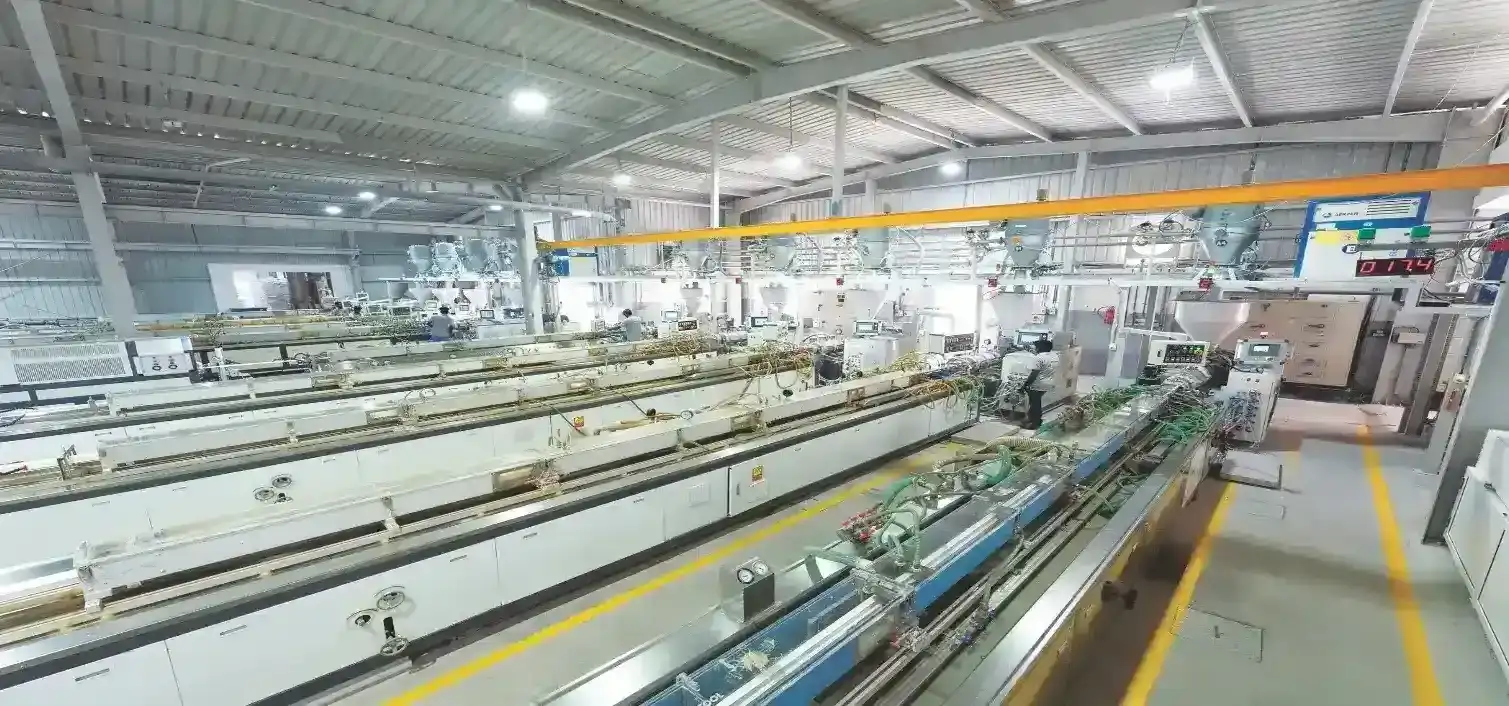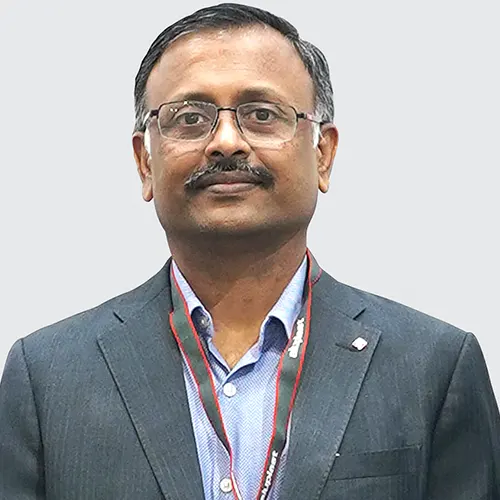
Ravi Balakrishnan is the Managing Director of aluplast India – one of the leading uPVC window and door profile manufacturing companies in the world. He holds a 1989 – 1993 B.Tech in Mechanical from the National Institute of Technology.
In an insightful exchange with WFM Media, Ravi Balakrishnan reflected on the company’s evolving journey since taking charge in 2022. The interview sheds light on the company’s commitment to the ‘Make in India’ initiative, exemplified by its state-of-the-art Vadodara facility serving both domestic and international markets.
The discussion also explored Aluplast’s dual focus on the residential high-rise and retail segments, its readiness for smart home integration, and its technological innovations in acoustic insulation, automation, and security. With a clear vision of sustainable growth, increased localisation, and double-digit market expansion, aluplast India continues to shape the future of windows and doors with integrity, innovation, and enduring quality.
Q. You Took Charge Of Aluplast India In 2022. What Has The Journey Been Like So Far And How Have You Navigated The Challenges Of A Fast-Changing And Competitive Market?
Indeed, time flies. It has been a couple of years already, and to say the journey has been easy would be an understatement. It has, in fact, been quite challenging. The Indian market has undergone significant changes in customer preferences and choices during this period. We have seen several players exit while others have entered, leading to an unstable market. In a more stable environment, operations tend to be easier, but this unpredictability required us to be agile and adaptive.
Despite these challenges, we have undertaken several strategic initiatives – some with immediate impact, but many aimed at long-term preparedness. Personally, having not come from a uPVC background, I have learnt an incredible amount during this time. It has been a highly enriching experience.

Q. Launching The Vadodara Facility Under ‘Make In India’ Was A Bold Move. What Is The Story Behind It, And How Has It Redefined Your Local Manufacturing Strength?
Our Vadodara facility was launched in 2016. From the outset, aluplast as a company has always been ambitious, even when it was smaller. It has long harboured global aspirations. When we entered the Indian market, we avoided the typical “chicken-and-egg” approach of waiting for demand to grow before investing in infrastructure. Instead, we took a bold decision aligned with the ‘Make in India’ initiative – to invest upfront and build a state-of-the-art facility in India.
This plant was never intended solely for the Indian market. It was designed to serve the entire Asia-Pacific region. Today, we supply products from Vadodara to the Middle East, Thailand, Malaysia, the Philippines, Australia, and New Zealand. The core belief was that without a solid manufacturing backbone, it would be extremely difficult to effectively capture and serve the Indian market – and the region at large.

Q. From High-Rises To Homes – Aluplast Is Entering Diverse Segments. What Is Your Roadmap To Deepen Aluplast’s Presence Across India’s Residential, Commercial, And Infrastructure Sectors?
Our strategy is currently focused on two primary segments. First is the large residential sector, especially high-rise buildings. We are actively working with several developers, particularly in North and South India. These projects typically require large volumes of windows, and this is where we are investing our efforts.
The second area is the retail segment – villas, bungalows, and smaller apartments. While this segment was once a stronghold for aluplast, we have seen a shift in preferences recently, with more people – particularly architects – leaning towards aluminium. This has led to a temporary dip in our share in that segment.
However, we remain confident about our standing in sectors like education and healthcare, where performance elements such as noise insulation are prioritised. In contrast, when it comes to pure commercial structures like malls, which predominantly use structural glazing and have limited window requirements, our presence is understandably limited.
| “We have been in the Indian market for over a decade, and the performance of our systems across varied climatic conditions speaks for itself – real-world proof that uPVC is reliable, robust, and built to last” |

Q. With Smart Homes Becoming The Norm, How Is Aluplast Staying Ahead Of The Curve? From Acoustic Insulation To Automation – Where Does Your Product Innovation Meet New-Age Living?
Smart homes are a vast and evolving concept, with various users focusing on different aspects – comfort, automation, security, or convenience. At aluplast, we ensure our systems are compatible with a wide range of smart hardware.
For instance, today’s residences are increasingly adopting digital locks that operate via cards, fingerprints, or facial recognition. Our systems are fully compatible with such technologies, and we have already delivered several projects integrating these features.
Further, we are exploring motorised hardware to automate the operation of windows and doors. The possibilities are vast – automated systems can be integrated with voice assistants like Alexa, allowing users to open or close doors and windows via voice command. Our Delhi showroom demonstrates a fully automated lift-and-slide system.
Security is another critical component. Homeowners are understandably concerned about safety. Our systems support the installation of sensors that alert users when a window is open or closed, or even if an impact or breakage occurs – providing crucial real-time updates. These features can be integrated with broader home security systems, offering enhanced protection and peace of mind..

Q. uPVC Is Gaining Traction, But Myths Still Linger. How Are You Addressing Consumer Scepticism Around Quality And Longevity – And Flipping The Narrative?
We believe in offering the right solution for the right context – not pushing uPVC simply because it is our core product. Every project has unique requirements – some prioritise aesthetics, others look at functionality, energy efficiency, or sustainability. For instance, if someone wants a carved wooden door, then uPVC is not the right fit, and that is completely acceptable.
However, for high-volume residential projects, uPVC is an extremely sustainable, low-maintenance, and cost-effective solution. We are actively educating developers and builders on the long-term benefits – particularly in terms of thermal efficiency and durability.
A common myth is that plastic-based uPVC profiles lack strength. This stems from a lack of understanding of the reinforcement materials used and the system’s ability to withstand high wind loads. In reality, our systems can be customised and engineered to suit specific project needs based on climate, location, and structural requirements.
We have been in the Indian market for over a decade, and the performance of our systems – across varied climatic conditions – speaks for itself. Most installations have required only routine maintenance with no significant failures. These real-world examples are vital in convincing customers that uPVC is indeed reliable and robust for Indian conditions.
Q. Germany To India, Same Compound, Same Standards! How Crucial Is This Consistency For Building Trust? Are There Any Region-Specific Adaptations You Are Exploring Without Compromising On Quality?
This is a crucial point – and also a challenge. In India, there is a widespread tendency to play with the chemical composition of the uPVC mix to reduce costs. Builders may think they have negotiated a great deal, but they are often unaware of the compromises made in terms of performance and durability.
Low-grade profiles may fade, crack, or lose structural integrity over time. At aluplast, we have committed from day one not to treat India as a “third world” market. We use the same compound and maintain the same high quality – whether the profile is made in Germany, Mexico, the USA, or India.
While this approach has made selling more challenging in price-sensitive segments, we are now seeing a shift. More and more people are recognising the long-term value of maintaining consistent quality standards.
Additionally, because we export a significant volume of profiles from India to regions such as the Middle East and Australia – where profiles from both Germany and India are used side by side – we cannot afford to have discrepancies. Imagine two windows in the same building: one made in India, the other in Germany. They must perform identically.
That is our commitment. We do not cut corners. Whether made in India or abroad, every aluplast profile meets the same stringent standards. Indian customers can rest assured that they are getting a world-class product every single time.

Q. Let’s Talk Performance – Indian Summers, Monsoons, Dust Storms. How Do Aluplast’s Systems Stand Out In Durability And Design Against These Extremes?
This is a very important point and one that is becoming increasingly relevant. For example, in Delhi last month, May was reportedly the hottest in 120 years. When people speak about climate change, they often assume global warming simply means everything is becoming hotter and drier – but that is not accurate. Climate change also brings erratic and extreme weather. Summers are hotter, winters are colder, and rainfall is heavier in shorter bursts. So how do we tackle these extremes?
From our perspective, delivering a robust solution is a combination of three of our essential factors. It is not sufficient to merely design or manufacture well. While our profiles are engineered to withstand extreme climates, and our manufacturing processes and compositions support this, what is equally critical is the accuracy of design calculations. Windows should not simply blow off when the wind picks up.
The design must be precise with no compromise. The role of the fabricator is vital – they must follow norms and avoid cutting corners. Proper reinforcements should be installed as per the design, including elements like hurricane bars that reduce deflection under high wind pressure.
We go beyond manufacturing. We train and carefully select our partners and also monitor installations on-site. Only when all these components work together do you get a reliable and long-lasting solution. Otherwise, as seen during last month’s sudden dust storm, windows can be blown out, leaving residents exposed to the elements – wet and unprotected.

Q. What Opportunities Do You See For The uPVC Industry Within India’s Construction Segment?
We are anticipating double-digit CAGR over the next four to five years, as many studies and market trends suggest – and we are witnessing it ourselves. There is a significant growth potential.
Leading builders, especially those who prioritise quality, now realise that it is not just about cost negotiations. Quality is critical, and their long-term reputation depends on it. We have made strong inroads into the Bengaluru market, with several active projects underway. For the first time, we are also seeing interest from builders in the North, particularly Delhi – possibly due to the challenges they have faced, prompting them to seek higher-quality solutions.
We are seeing good traction in the North and South. However, we have not yet made significant inroads into the Western and Eastern regions. While challenges remain, including a noticeable customer and architect shift towards aluminium in the retail market, we firmly believe both materials can coexist. Aluminium and uPVC serve different purposes, and one does not have to replace the other.
We are optimistic. The double-digit CAGR forecast is quite realistic, and we are committed to tapping into that growth.

Q. You Have Built Teams In A Highly Technical, Future-Focused, And Sustainability-Driven Industry. What Leadership Philosophy Guides Your Approach To People And Performance?
It is certainly a challenging environment. There are many players in the market, and people frequently move from one uPVC company to another, leading to constant attrition. I have always emphasised what I call the “three E’s” – Energy, Enthusiasm, and Effort – over deep technical knowledge alone.
While knowledge is important, it is not always the most knowledgeable person who delivers results. The one with more energy, more drive, and the willingness to put in real effort is often the one who succeeds. During recruitment, I look for these three E’s.
In India, effort matters significantly. It is not like the Western world, where everything runs like clockwork. Here, you have to follow up, make repeated calls, push and pull to get things done. That is the reality we work within, and I want my team to be aligned with that mindset.
| “You can’t build a future on shortcuts. At aluplast, quality isn’t optional – it is built into every decision, every design, every door and window” |

Q. Where Is Aluplast India Headed? What Is The Big Vision For The Next Five Years?
That is a tough question, given the global context. I have worked on long-term strategic plans for many years in this role and in my previous assignments. But more recently, I have begun using the term “VUCA” – Volatile, Uncertain, Complex, and Ambiguous more and more to describe today’s world.
It’s incredibly difficult to plan long-term in such unpredictable conditions. Look at today’s global scenario – two real wars, ongoing trade tensions, and widespread volatility. That makes long-term planning very challenging.
However, India is relatively stable and protected. We have a robust domestic market. Within that context, our vision for the next four to five years is straightforward – we aim to double our market share.
Q. Are There Any Expansion Plans Currently In Progress?
We have already made significant investments in infrastructure at our Vadodara facility, and we expect this to meet our operational needs for the next two to three years. Our focus now is not on expanding our physical infrastructure but on increasing localisation and tooling capacity.
Between 2023 and 2025, we doubled our tooling capacity. That means we are manufacturing more systems locally, significantly reducing dependency on our parent company in Germany. Our goal is to strengthen our manufacturing footprint and resilience in India.
We are also committed to sustainable investments. For instance, we have installed a 300-kilowatt solar photovoltaic rooftop system to reduce our carbon footprint and make our operations greener. Additionally, we are working on a co-extrusion project aimed at integrating recycled material into our profiles. This helps reduce the reliance on virgin material.
This is a capital-intensive and technically complex initiative, but we are determined to head in that direction. So, while we are not expanding our factory footprint just now, we are investing in ways that align with our broader goals – sustainability, localisation, and long-term quality.

Q. To Conclude, Would You Like To Share A Message With Our Readers – Especially Regarding uPVC Windows And Doors And Their Long-Term Value?
Our message has always been consistent. In India, we face a somewhat unique scenario where the regulatory framework is relatively weak. There are no strict controls to keep substandard products or poorly designed systems out of the market.
Whenever a major incident occurs, we form committees to investigate and analyse what went wrong. We have all witnessed some tragic events in recent weeks – some involving loss of life. The question is: why are we always reacting instead of proactively preventing such events?
India has ample technical know-how and the capability to avoid many of these disasters. But too often we prioritise short-term cost savings over long-term durability and safety. Yes, there will always be someone offering a cheaper alternative – but at what cost?
At aluplast, we are not so expensive that people cannot afford us. A small price difference – perhaps 5% to 10% – should not justify cutting corners. The true cost emerges later, when quality is compromised.

